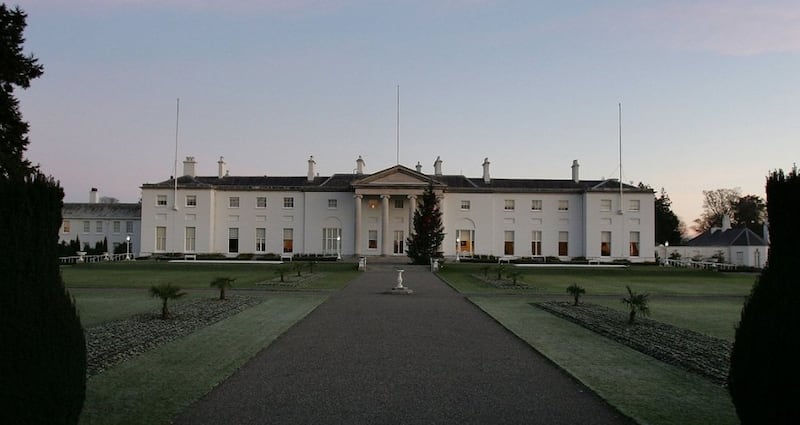Michael D Higgins won the presidential election with votes to spare but most of the commentary in the aftermath has been about the reasons for the dramatic late surge in support for Peter Casey.
Why so many people voted for somebody who was almost a complete unknown only a few weeks ago is a matter for debate but combining the election results and the opinion polls conducted for The Irish Times and RTÉ it is possible to at least broadly establish who voted for the two leading candidates.
The typical Higgins voter was young, urban, middle class, and a Fine Gael or Labour Party supporter, with Dublin Bay South and Dún Laoghaire the only constituencies to give him more than 70 per cent of the vote. By contrast the typical Casey voter was older, rural, working class and a Fianna Fáil, Sinn Féin or Independent voter. Casey exceeded 30 per cent in a string of rural constituencies down the west coast and into the midlands.

There was also quite a gender divide, with Casey significantly stronger among men than women, while the reverse was true with Higgins, who appealed more to women than men.
The appeal of Higgins to the young is similar to that of his left-wing political soul mates of a similar age, Jeremy Corbyn and Bernie Sanders, whose brand of politics appeals to a generation far younger than their own.
There is a nice irony in the fact that a President who strongly defines himself as being on the left was the overwhelming choice of the educated urban elite, while the main appeal of his principal challenger was to those at the other end of the social scale who feel excluded or ignored by the affluent society.
Rural constituencies
On a geographical basis Casey did best in the largely rural constituencies such as Tipperary, Galway East, Limerick county and Donegal. His controversial remarks about Travellers were made in connection with a row over a housing development in Tipperary and he later visited the site, where he attracted a huge level of publicity.
There is little doubt that the huge publicity generated by his stance on Travellers catapulted Casey from the bottom of the field to a respectable second place in a little over a week.
The geographical spread of the Casey vote indicates that he did best in the rural areas where there has been controversy about Travellers and he did worst in the better-off parts of Dublin where the issue has not generated quite the same level of debate although local opposition to halting sites has occasionally flared in the capital.
What Casey managed was to harness the votes of people who feel aggrieved at the system for one reason or another and the Traveller issue was the catalyst for his surge. There are lessons to be learned by society at large but also by the Travellers if the two communities are to establish a more harmonious relationship.
It would be a mistake, though, to read too much into the Casey vote. In almost every election some party or group of Independents has managed to harness what one prominent Labour politician long ago termed the “f*** you vote”. This vote has gone to Labour on occasion, most recently in 2011, but it always deserted the party after its spells in government.
In recent years this anti-establishment vote has been harvested by Sinn Féin, the hard left and some maverick Independents. Look at the result of the last general election in 2016 when Independents and smaller parties got almost 30 per cent of the vote and Sinn Féin another 14 per cent.
The combined vote for Fine Gael, Fianna Fáil and the Labour Party, who all backed the incumbent President this time around, was 56 per cent in 2016, precisely the same share of the vote obtained by Higgins on Friday.
A substantial segment of the Irish electorate has been prepared to rebel at regular intervals against the political establishment. Remember that in spite of the overwhelmingly positive attitude to the European Union the electorate twice rejected EU treaties since the turn of the century.
Casey managed to harness the rebellious streak this time around and it is no accident that the Sinn Féin vote was far below what people inside and outside the party expected. The simple explanation is that Casey ate into the party’s natural constituency of anti-establishment voters. The solitary constituency in which Liadh ní Riada edged ahead of Casey for second place was the party leader Mary Lou McDonald’s home base, Dublin Central.
It would be wrong to assume that the Casey phenomenon is a harbinger of a new form of populist politics in this state. In any case we already have considerable experience of populist politics in recent years with the water charges protests being the most recent manifestation.
Second-order elections
It also needs to be remembered that presidential contests are what political scientists call “second-order elections” in which voters are not making fundamental choices about who will govern them. European elections down the years have thrown up maverick winners of various stripes.
One of the fascinating pieces of information in the RTÉ/Red C poll was that Casey easily outscored Higgins and all the other candidates on “the ability to stand up for ordinary people”. In the past it was Sinn Féin and the hard left who did best on this criterion.
However, it should be noted that the ability to stand up for ordinary people was not rated by voters as the most important attribute of a president. By far and away the most important issue in the minds of voters was the candidate’s track record and experience.
Higgins easily outscored all his opponents on that issue and that goes a long way to explaining his comfortable margin of victory. Casey certainly surprised everybody by his showing but it needs to be remembered that Higgins still beat him in every constituency in the country.









